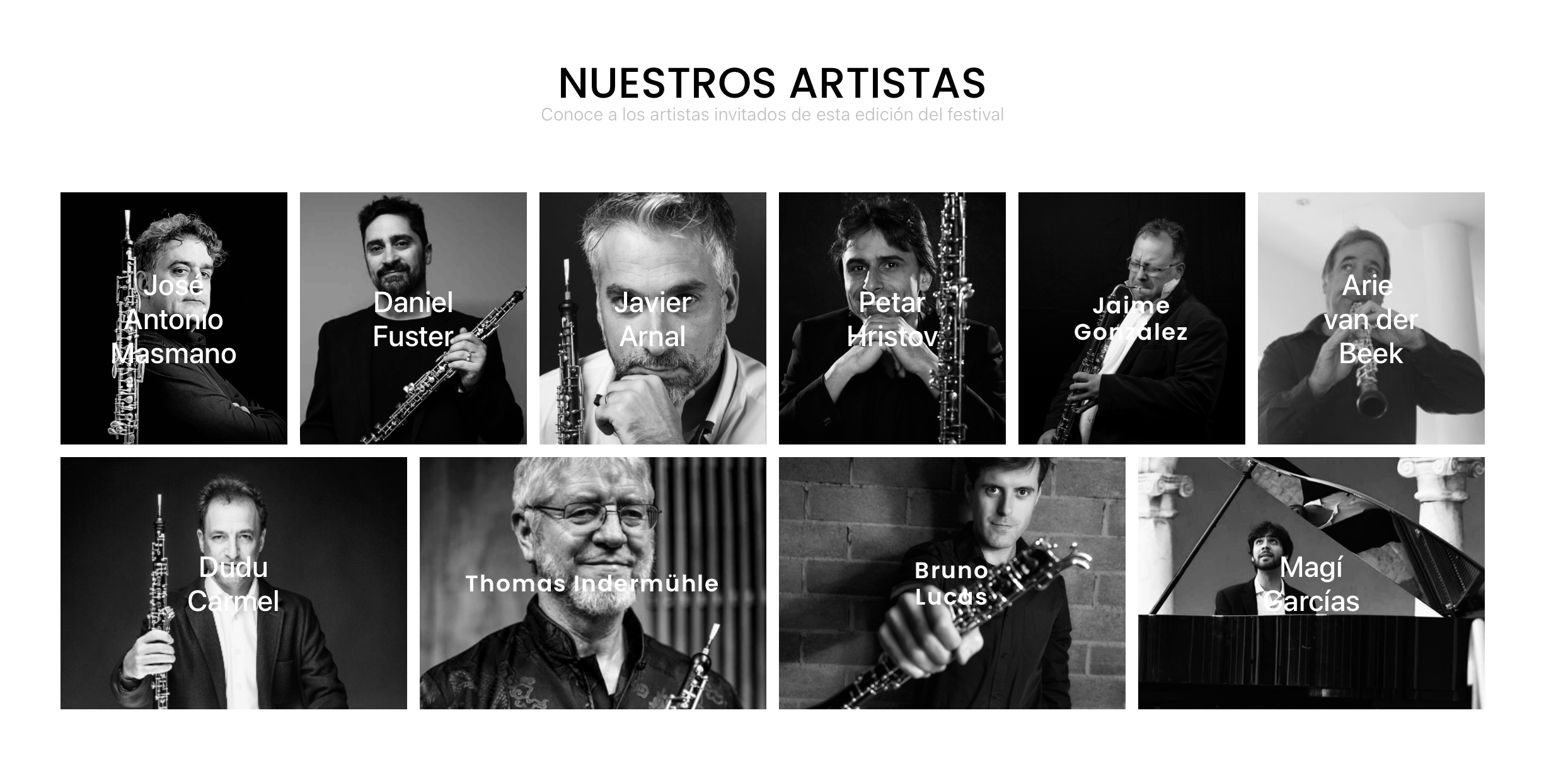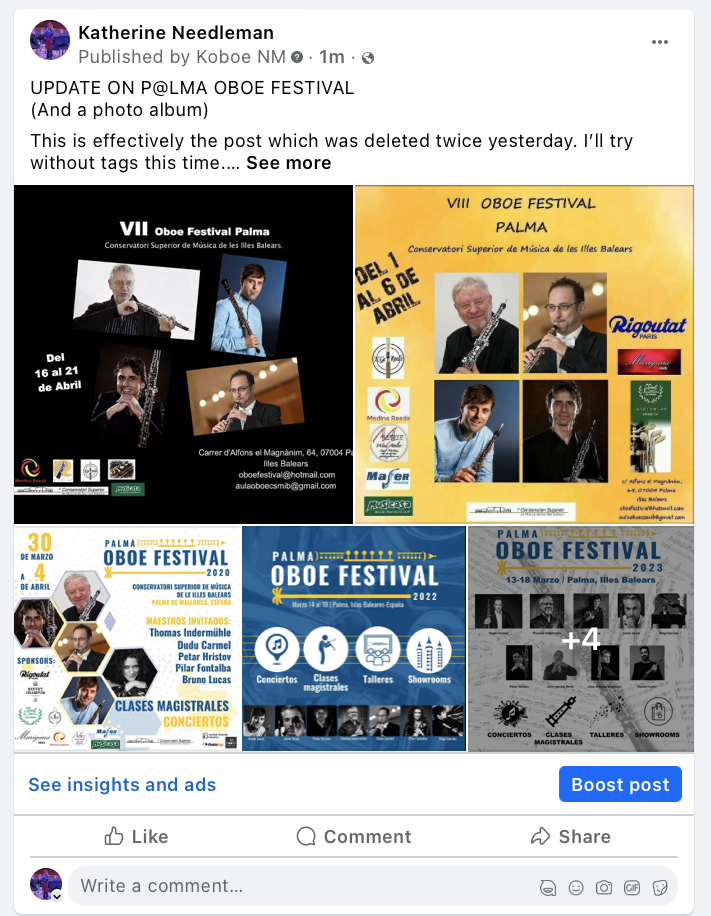Once this was deleted from Facebook a third time on a second day, I decided to put it here instead.
UPDATE ON PALMA OBOE FESTIVAL
(And a photo album)
This is effectively the post which was deleted twice yesterday. I’ll try without tags this time.
A month ago, I shared a poster for the 2024 Palma Oboe Festival, sponsored by just about every oboe maker and featuring a roster of nine all-male headliners. I extended the benefit of the doubt--having been told by one of the oboe makers that the roster was a surprise to them--that everyone involved, from sponsors to headlining artists was surprised by the organizer’s decision to exclude women and other gender-marginalized people from the headlining artists.
A few days after I (and others) posted about this exclusive event, Mujeres en la Música wrote an article about it on December 26. This event has been promoted by the Asociación de Fagotistas y Oboístas de España, an associate organization of the International Double Reed Society. A few days after Mujeres en la Música’s article, Bruno Lucas, who I believe to be one of the organizers, wrote a letter which was shared in response to my asking where the women were on Daniel Fuster’s Facebook page. That letter is in this photo album.
This morning, I was able to dig up previous posters for this event. As it turns out, it should actually not come as any sort of surprise to any sponsor or artist that the Palma Oboe Festival would have nine all-male artists for this year. While I don’t have any pre-2018 posters, the ones I do have (in this album) reveal at maximum one woman headliner. All these men artists and their sponsors who return year after year could not be surprised unless they are really living on another planet.
It is not as if there is a lack of excellent women oboists in the world, in Europe, or in Spain. In fact, I have received several DMs naming Spanish women oboists who would be *at least as good* (I’m paraphrasing here) as the chosen men. When the women exist, but they don’t have the same opportunities for financial or career advancement as men, there is a problem.
In his letter, Lucas took responsibility for the lack of women and promised to do better in the 2024 edition of this festival. This sounds like a good thing. However, at the end of this album is a screenshot of “Our Artists” from the festival’s website today, January 21, 2024. Either there is no urgency to update this problematic imagery or it won’t actually be done. I am curious what the plan is and how many women, if any, will be added to the 2024 edition. I hope it will be at least nine.
*Disclaimer for any Fragile Men reading this post or a team of them reporting my posts to get them taken down: This is not a personal attack. You are sitting on your computer or phone just as fine as can be, just perhaps a bit uncomfortable like the rest of us. This Palma Oboe Festival is representative of systemic discrimination in the world of oboe and in fact, in classical music at large. While men such as yourselves benefit from this systemic discrimination at the expense of the rest of us, you also have a great opportunity to insist upon better. This is a call for organizations like yours, sponsors who support you, and Big Fancy Men headliners at these places to insist upon better. Again, it is not a personal attack, and you don’t need to report this post because it is not hurting anyone.








